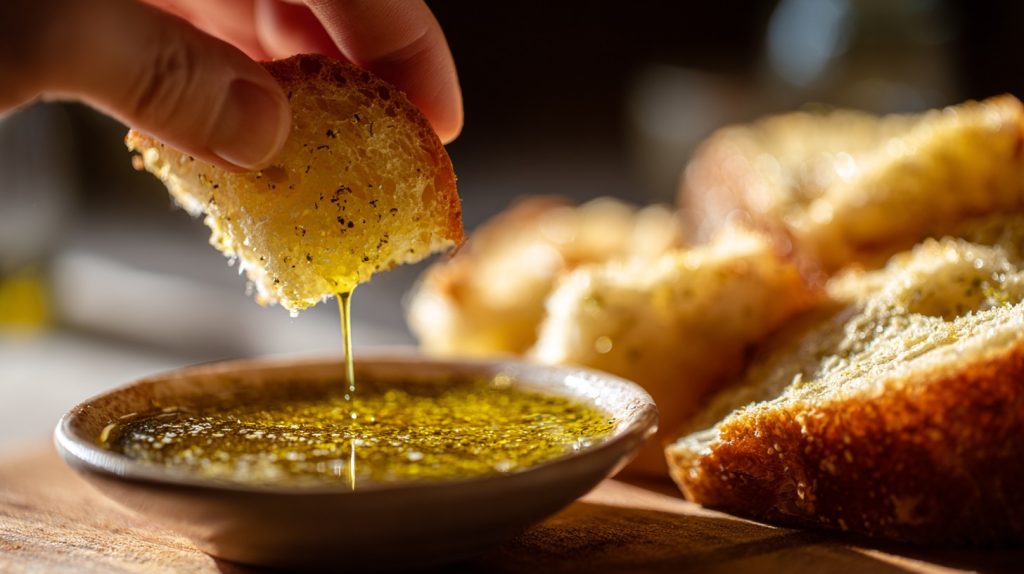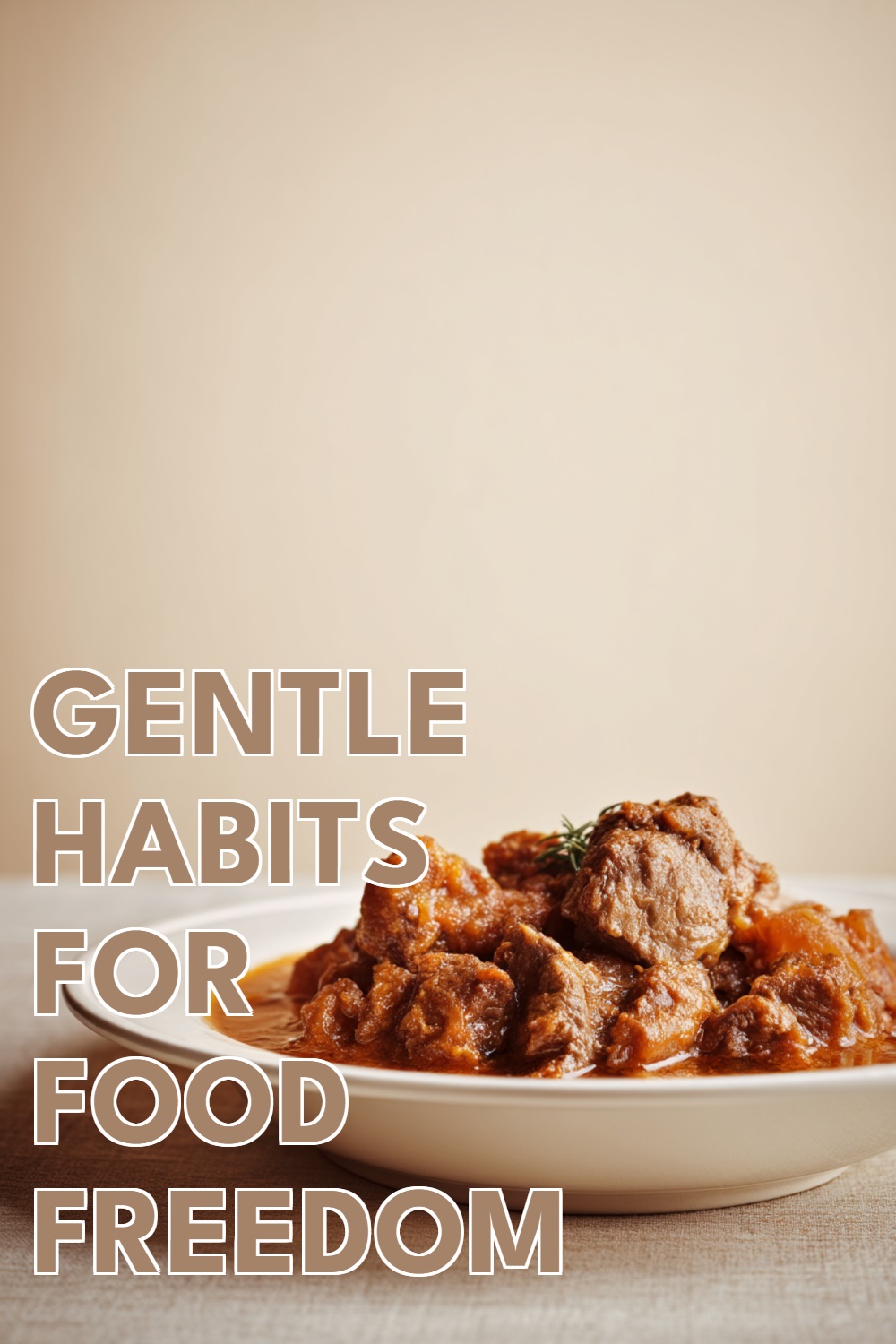When most people try to eat better, they go straight into control mode.
Strict plans. Rules about what you can and can’t eat. Schedules that only work on perfect days.
The problem? Real life isn’t perfect.
Rigid habits might work for a week or two, but they eventually break under pressure. Then you feel like you failed. Again.
But it wasn’t you. It was the system.
You need habits that work with your real life – not against it.
What Food Freedom Habits Actually Are
Food freedom doesn’t mean you eat anything, anytime, without thinking.
It means you eat in a way that feels good, supports your health, and doesn’t take over your brain.
Food freedom habits are what make that possible.
They’re the practical, repeatable things you do that reduce stress, not add to it. They help you feel more in control without needing to control everything.
And they’re built around you – not some ideal version of you, but the real one.
The Problem With Habits That Work Against You
Some habits look good on paper but fall apart in real life.
You meal prep five perfect lunches… then forget you have back-to-back meetings all week.
You decide to stop eating after 7 p.m.… but you’re starving after a long day.
You track everything you eat… until it becomes exhausting and you quit completely.
These habits fail not because you’re lazy or inconsistent. They fail because they’re rigid.
They don’t flex with your energy, your schedule, your cravings, or your needs.
The Goal Is Support, Not Control
The right habits support you when things get messy.
They help you stay grounded when your day doesn’t go to plan.
They give you tools, not rules.
That’s what food freedom habits are. They work with your preferences, your rhythms, and your goals.
And they’re flexible enough to hold up when life shifts – because it will.

What Food Freedom Habits Have in Common
Let’s make this concrete. These habits all share a few key traits:
1. They’re flexible
You can adjust them to your day. No perfect conditions required.
2. They’re awareness-based
Instead of following external rules, you pay attention to your hunger, energy, and satisfaction.
3. They’re built around you
They take your preferences, routines, and limitations into account.
4. They support consistency, not perfection
You don’t have to do them “right” for them to work. You just need to come back to them more often than not.
Examples of Food Freedom Habits
These are simple, sustainable habits that you can shape to fit your life:
1. Eat meals that satisfy you
Don’t go for the lowest calorie option. Don’t try to just “get by” on lettuce and hope for the best. Eat enough to feel steady and satisfied so you’re not constantly fighting cravings later.
2. Ask yourself, “Am I hungry?”
This takes two seconds. Not every snack or craving is about hunger, and that’s okay. But checking in helps you eat with intention instead of autopilot.
3. Have go-to meals
Choose 3 to 5 simple meals you actually enjoy. When life gets chaotic, you’re more likely to eat well if the decision-making is already done.
4. Notice how food feels, not just how it sounds
You might crave something salty, crunchy, or sweet. Totally normal. But check in after you eat: did that actually leave me feeling better? If not, what might next time?
5. Make peace with your favorite foods
No food should feel like it has power over you. Letting yourself eat the things you love in a calm, conscious way reduces guilt and obsession over time.
6. Pause halfway through a meal
Not to be strict. Just to ask: how am I doing? Still hungry? Still enjoying it? You might keep eating, or you might not. But now you’re choosing.
7. Drop the guilt after eating
You ate something “imperfect”? So what. Dwelling on it doesn’t help. Learning from it might. Move on and eat your next meal like nothing went wrong.
Why These Habits Actually Work
They’re simple enough to repeat. They don’t rely on willpower. They don’t crumble when life gets weird.
Most importantly, they build trust with yourself.
You stop outsourcing decisions to plans, diets, or rules. You start noticing what works for your body, your mind, and your life.
That’s the foundation of food freedom.
What This Might Look Like in Real Life
You skip the food log and just check in with hunger before meals.
You stop trying to “be good” all day and instead eat solid, satisfying meals that leave you steady.
You keep chocolate in the house without eating the whole bar in one sitting, because you’re not telling yourself it’s off-limits anymore.
You stop starting over every Monday because nothing needs to be restarted.
Start With One Habit
You don’t need to overhaul everything. That usually backfires anyway.
Pick one habit that sounds doable. Try it for a few days. Adjust it if needed.
The goal is to create something you can return to, even when you’re tired, distracted, or stressed.
That’s the kind of habit that sticks.
Final Thoughts
Food freedom isn’t a personality trait. It’s a skill set.
And like any skill, it gets built one step at a time.
If rules and restriction haven’t worked for you, that doesn’t mean you’re the problem. It means the system didn’t fit.
You can create your own system. One that works with you.

